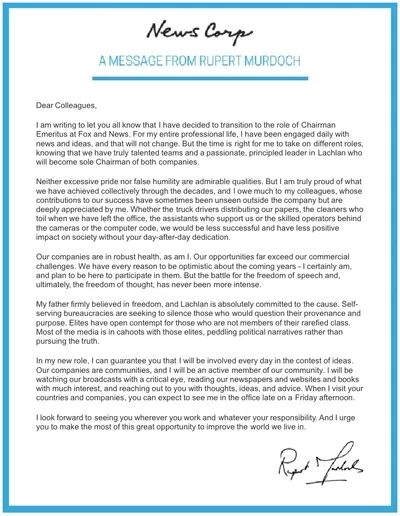It is safe to say that permaculture founder Bill Mollison was a socialist who envisioned a world of cheap shared land and labour in his design for co-operative rural communities operating outside of the mainstream economics. His ideals were brilliant and sound good on paper although it is also safe to say, some of his ideas are a lot of work in practice.
Co-operatives are only as good as the people in them. Like any community group, egos can destroy the whole group, although groups do need motivated leaders and people prepared to do the work in doing the paperwork. Member’s expectations are often not aligned with the group as a whole. Remember to thank the workers and only criticise or complain after careful consideration.
Practical mistakes can enter the system, such as one or two members of a barter or LETS group can do a lot of work and amass a large total, but not have a diverse range of goods and services to spend their hard-earned on. Go in with your eyes open.
That said, when they do work properly, the rewards are not only financial but a real sense of belonging to a caring community is achieved.
PART 2 THE INVISIBLE STRUCTURES OF SETTLEMENTS
21. Permaculture – Invisible Structures of Settlements
On this page:
Formal & Informal Economy
Land Access & Urban Systems
Village Development
Commerce
1. RECYCLING IN THE COMMUNITY
(For further information see “Bioregional Organisation” by Bill Mollison, Economy of a Village Community by Bill Mollison and Reny Slay. available from Permaculture Institute Australia).
A worthwhile goal of any community is to keep the money saved and earned in the community cycling within itself. The only way to do this is to establish financial and economic systems in the community, such as a credit unions, revolving loan funds, or local currency
22. Permaculture – Formal & Informal Economies
Local, social, community economies falls into 2 broad categories:
The informal economy, e.g. barter. The formal economy, subject to accounting procedures
A. THE INFORMAL ECONOMY
* Work groups co-operating to accomplish projects
* LET systems Community barter clubs operating on a system of debits and credits’ for the exchange of goods and services
* Purely volunteer labour to the group or community
* Informal bartering within the community
B. THE FORMAL ECONOMY
* Consumer- producer co-operatives
* Community savings and loans
* Bioregional currency systems
* Leasing Systems
* Earthbank
1. Producer – consumer cooperatives
A co-operative is a group of people acting together for the benefit of members; principles are:
* Open membership
* Co-operation Education Democratic organisation
* Strictly limited interest on share capital
* Surplus/savings belongs to the members
* A producer – consumer co-operative both buy from, and sells to the community Money is circulated within
2. Community savings and loans
Revolving loan funds provide capital to community based groups as well as technical assistance; they also develop networks of lenders and borrowers. Some examples:
* S.H.A.R.E. PROGRAMME (Self- Help Economy, Great Barrington, Massachusetts) Non-profit organisation formed to encourage small businesses that are producing necessary goods and services for the community, Works in conjunction with local bank. Members open a SHARE account (6% interest); loans are 10% interest.
Borrower must show that proposed business will be a success by:
(I) references of past experience & character, and
(2) getting support from the community
* C.E.L.T. PROGRAMME (Community Enterprise Loans Trust, New Zealand) Charitable trust which promotes and supports co-operatives; provides advice, runs training sessions, and acts as a savings and loans organisation.
The borrowing criteria are:
(1) must be a co-operative group, and
(2) the co-operative must be willing to work closely and regularly with CELT during the loan so that it has the greatest chance to succeed
* CREDIT UNION credit unions must have a unifying common bond that links he membership together They have a purposeful non-profit structure and are owned by the depositors who are shareholders and are organised for the benefit of the members, providing both the normal banking services as well as financial counselling and guidance for members Credit unions are harder to start, and must comply with governmental regulations by having a common bond (occupational associational, and community) and by demonstrating the need for stating anew credit union and the support to sustain one
3. Local currencies
Already there are many ‘currencies’ in the form of vouchers, coupons, and tickets. These can be traded for goods and services One community level, these vouchers or currency can be based on a real asset of the community. e.g. wood, clean water, a community services council could print, back up, and handle the currency. which can be exchanged for most goods and services in the area The community can then start community projects with the money. Businesses starting up can pre-seIl their services in order to get start-up capital
4. Earthbank
The Earthbank Society in Australia and Earthbank Association in U.S.A. exist to gather data on current alternative economic and financial strategies, and to assist in setting up ethical financial Systems in the region, Local Earthbank societies must be started in every bioregion
5. Leasing Systems
Any community, group or individual can run a leasing service for others. A group may get together to purchase an item (i.e. vehicle, photocopier, mulch chipper) for lease to the general community (i.e. by the kilometre, piece, or hour). The charge applied must pay for purchase. maintenance and replacement costs (within a period of 2-5 years. depending on the hem purchased)
23. Permaculture – Land Access & Urban Systems
* Oxfam land-lease system
* Land trusts and trusteeship
* Farm and garden clubs
* Farm-link system
* Commonworks
Oxfam land-lease system
A regional office is needed to link landless people in the city with those (usually pensioners) who have a large lot or back-yard that needs tending. Regional office prepares a standard lease specifying rental (if any), goods exchange, length and type of lease, and access. Office should make a small service charge for this and many other urban services (the function of a bioregional office is to serve the community)
City Farms
Very popular in the U.K – Associations lease or are given land, and a management group is appointed. On this land the following activities are promoted:
* Demonstration gardens/allotment gardens
* Domestic animals kept; used as demonstration and breeding stock
* Recycling centre for equipment, building materials
* Family / community meetings and picnics
* Tool rental and access
* Cleaning operations (see below)
* Plant nursery
* Seed. book. plant, & general retail sales
* Seminars. demonstration, training programmes, educational outreach
City As Farm: Gleaning
Surplus city product Is collected, sorted, packaged (if necessary), and retailed, Example is of man in Melbourne who makes a living collecting and selling chestnuts from backyards. Gleaning operations can even take place In country areas near the city for distribution to community groups. the poor. the general public etc. Another strategy is to provide a service (mowing. pest control. manuring, fire control) by ranging sheep, duck or geese flocks in city backyards or lots.
Farm Link
Appropriate to high-rise or rental families in an urban area, 15 – 20 nearby families link to one farm in the nearby country, thus providing a farmer with income and themselves with fresh, inexpensive fruits and vegetables. wheat and meats (depending on the arrangements made with the farmer).
The families should meet quarterly (or have a representative do so) with the farmer to make seasonal choices. As the link grows, the system can also accommodate:
* Holidays on the farm
* Educational workshops
* City (family) help on the farm at busy periods
Farm and Garden Clubs
These suit families with some capital to invest as shares, with annual membership dues. Alarm is purchased by the club or association, and a manager (if necessary) is appointed. Depending on the aims. of the association, the farm can be used for a variety of purposes: food growing, holiday retreat, woodlot and forest establishment.
Commonworks
A farm held by a land trust near the city arranges a series of special leases for a variety 0 purposes and businesses (forestry, livestock, teaching, crafts, dairy, brickworks, and other complex enterprises). Some of these are land (area) leases; others activity leases. 10% net profit is returned to the Commonwork Fund for land to be developed for further leases. One such farm in Kent, U.K. demonstrates the best model of such farm use at he highest level, Bore Place, Chiddingstone. Edenbridge Kent TNR 7AR)
Trusteeships and land trusts
In order to acquire land (without purchasing it) Ion community Or public purposes, must set up a public charitable or non-profit trust (more information follows in other section}. Once the trust is formed. it is in a position to advertise for and receive. gifts of land and funds
24. Permaculture – Legal Structures
* Discretionary trusts Charitable trusts
* Subscription trusts (investment trust) Discretionary Trust
Conducts affairs as any normal business; only difference is that it does not keep any profit, but rather distributes profits to beneficiaries. The company does not pay tax if it distributes its income, but the beneficiaries are liable for personal tax.
Trust has a trust deed (statement of purpose). Board of Directors. Secretary meeting. and can own business names. (In the case of Bill Mollison’s McAlistair Trading Trust, for example, it owns the business names ‘Permaculture Consultancy and ‘Tagari Publications’)
Non-Profit Education Charitable Trusts
Set up for the public good; may accept gifts and donations (of lands and goods) from the public and other trusts (e.g. the discretionary trust described above). Directs the money towards its stated aims (as described in its trust deeds) Also has a Board of Directors and must follow the legal rules. It is immune from taxation. and may apply also for tax-deductible status (for people gifting goods and property)
Investment Trust
Groups get together to advertise for investment funds (or even donations) from the public n order to invest in ethical propositions, particularly purchase and renovation of degraded land, village developments, bioregional development, and purchase of forested areas The emphasis would be on rehabilitation – both social and environmental.
25. Permaculture – Village Development
* Forming the management group
* Arranging site option or purchase terms
* Obtaining agreement from local authority (may require extensive planning and environmental reports)
* Obtain sealed permission for subdivision. cluster title, strata title from local authority
* Do careful sums (for roading, purchase, sewage, water city supply. etc)
* Prepare a detailed and careful site plan & proposal for the village
* Sell to clients by advertisement (if group not formed previously
Village Infrastructure
* Private housing
* School, seminar, and workshop rooms) craft. community area
* Food processing centre., cafe. commercial or surplus sale (open-air Sunday market)
* Retail shops; ‘tourist facilities
* Dairy processing centre
* Domestic livestock housing (chickens, goats, pigs, sheep)
* Common areas for recreation. woodlot, building materials (poles)
* Domestic and commercial crop areas
* Water storages and reserves
* Wildlife and forested conservation areas.
* Village revolving loans fund
Potential Enterprises and Occupations
* Food provision
* Energy provision
* Vehicles and tools
* Financial
* Medical
* Building
* Services (accounting, typing, computer)
* Repair
* Craft
* Trade (retail)
Capital flow within and without a village
The aim is to keep as much money as can be usefully and productively used within the system: Thus to reduce taxation, consumption of outside resources, energy costs and outside Investment. and to return resources to income and consumer products within the village.
* Consumption is reduced by lifestyle change, vehicle sharing etc.
* Taxation is reduced by legal strategies
* Energy by technological strategies and conservation
* Trade by developing local resources.
Little of this is possible unless investment, via the village bank, is controlled by the village
Well designed community
* Stores all surplus storm-water into swales for groundwater recharge
* All buildings face the sun and contain solar devices
* Streets narrow with few parking spaces (but enough) to cut down on heat build-up from streets
* Many bicycle paths throughout the community
* Common spaces for recreation; lots smaller than usual Privacy on street-side (usually fenced) with shared ‘public’ backyards, usually containing gardens and fruit trees
* Common food-growing areas, particularly grapes. fruit trees, jujubes
* 10% of houses allocated for low income families (who apparently do most of
the planting and even have anon-site tortilla business)
Next – 26. Permaculture – Alternative Community Commerce
26. Permaculture – Alternative Community Commerce
* Co-operatives
* What makes a small business successful
* Strategies applicable to small businesses
1. Co-operatives
Co-operatives are formed to help in community revitalisation and worker productivity and contentment.
Decentralised worker owned, and (usually) socially conscious, co-ops are a useful alternative to single ownership businesses.
Australia was built on co-operatives – dairy co-ops for diary production and sales, fishing co-operatives, etc.
Famous example is of the Mondragon Co-operatives in the Basque region of Spain, where 10% of profits are returned to the community for public services, a co-operatively run bank oversees businesses and gets them started; and there are no redundancies – workers are retrained and new jobs found in other expanding co-operative endeavours.
Land sharing co-operatives (sometimes called ‘intentional communities’) form when members each put in money and the co-operative buys land. The members are each entitled to build a house on their allocated plot, while the co-operative owns the land and builds infrastructure such as shared roads. These co-operatives are not for everyone, and we encourage prospective members to read our experience: Do you want to live on an Intentional Community?

New Australia utopia in Paraguay
2. Bartering / Energy Exchange / LETS / WOOFing
Bartering is simply the exchange of goods or services for other goods or services without using money. Bartering is often called “energy exchange” as individuals negotiate their trade.
Local Exchange Trading Systems (LETS) are a type of bartering system in local communities. The movement is based on five key governing principals: cost of service, consent, disclosure, equivalence to the regional currency, and interest-free credit. The LETS movement reached its height in the 1990s.
WOOFing is a popular means of attracting labour to a farm. It is popular amongst backpackers who exchange a few hours labour each day on tasks assigned by the host for a bed and shared meals. The backpackers gain accommodation, experience and knowledge while the host farm benefits from the human contact and work completed.
3. The Successful Small Business
* Start small; learn how to run a business
* Start a business in an area in which you are interested (not which you think will make money)
* Gain a good reputation for service and durability
* Action: once decision is made, effort is made quickly to adopt it
* Belief in a set of values for the company, often restated
* Respect and encouragement of co-ownership by staff
* Use a simple organisational structure with ‘management’ in close contact with staff & customers
* Look ahead
4. Small Business Strategies (including for co-ops)
* Presales and pledges can start a business off.
Books are often “pre-sold” in order to pay for printing costs.
One example of a restaurant printing food vouchers redeemable up to a year (discount on a meal) raising the revenue to buy out the original owner.
Individuals contemplating a small business should ask the people in the community whether they would buy his/her goods or services (market research)
* Co-operative catalogue:
Individuals and businesses can get together to put out a catalogue of all their goods and services
This has been done in the U.S. In The Catalogue of Wonderful Things’ (Crafts) with each product and address given Individually
Can also try the idea of a co-operative ‘label’ and the filling of orders through a co-op business set up for such a purpose
* Loans:
Should receive loans from a local S.H.A.R.E. or C.E.LT. group; there are even government agencies that make low interest loans to co-operatives (which must demonstrate viability)
Next Page – Permaculture Design Course – Permaculture Trainees
Circular economy – Further reading
A Circular Economy Handbook: How to Build a More Resilient, Competitive and Sustainable Business by Catherine Weetman
The Circular Economy: A User’s Guide by Walter R Stahel
Buy And Sell Second-Hand Goods: How To Turn Secondhand Items Into Fast Cash & Long-Term Investments: Methods To Make You Money, 2021 by Zoila Monger
Related stories
Circular economy booming and going cashless
AI driving a sustainable fashion industry
Massive Corporate Profits Amid Cost of Living Crisis
Global Food Production Dilemma: Grow & Buy Local
Can you rent out a Tiny Home, Granny Flat, Transportable building or Caravan
Do you want to live on an Intentional Community?




